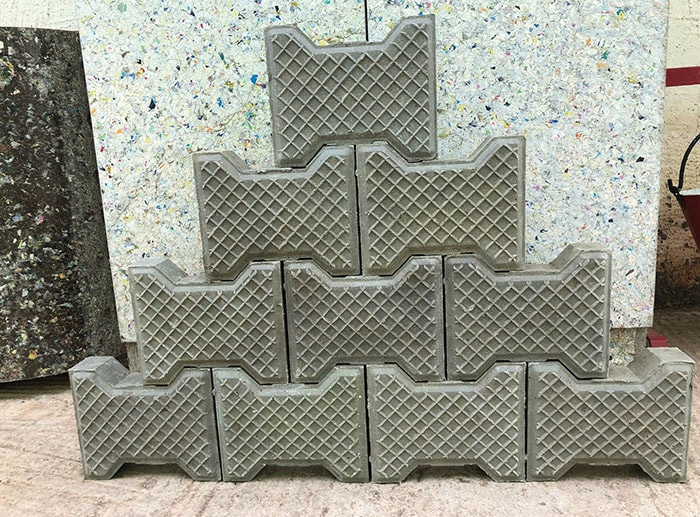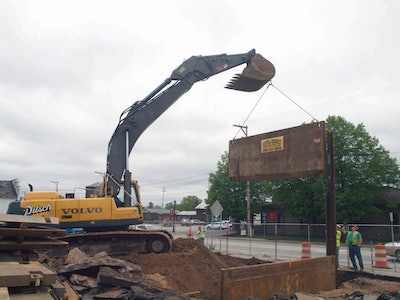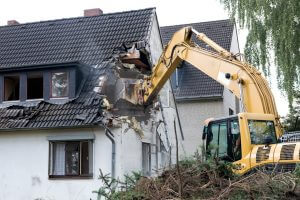
When a historic house is scheduled for demolition, many people question whether or not it should be demolished. The answer to this question is not always straightforward and will depend on a number of factors.
Many times, a building's historic worth can be preserved and repurposed in a new way. This is called "redeeming" the building and it's generally preferred to demolishing it and rebuilding.
If a property has been deemed redeemable, it is important that you work with your city’s preservation planners to explore potential options for the building’s future.
Demolitions of older buildings have a negative influence on a community's character and can damage the integrity a historic area. This is why many cities have ordinances in place to discourage the destruction of older buildings or structures.

Sometimes, however, it is necessary to demolish an older building for safety or other reasons. One example is when a historic building needs to be demolished because of safety or health concerns.
If the owner plans on building a new structure, this is another reason to have the property demolished. A notice must be posted by the town if demolition is necessary before demolition can begin.
In some cases, the preservation of a historic house may be possible through a public hearing or a vote. A local committee or group will arrange to raise funds and renovate it. The building can then go for sale and the money could be used to renovate another historic house.
Belleville Historical Society will raise funds to renovate the historic Belleville house. Once the house is renovated, funds will be deposited into a fund for other houses in desperate need of renovation.
A historic house is a valuable part of your community's history and it should be preserved rather than torn down. It is vital to contact the Historic District Commission if you plan to demolish an historic house. They will help you determine the best way for your building to be preserved and the history of your neighborhood.

Before you decide to demolish an historic house, make sure it has been inspected by the State. This will ensure that it is structurally sound and safe. You can talk to a historic preservationist about whether your building could be preserved rather than being demolished.
When a building is listed on the National Register of Historic Places, it is considered to be important and is protected by law. The state has a legal obligation to make sure that a historic house is stabilized so it does not need to be demolished.
The Connecticut Historic Preservation Office will inspect any building that is being demolished before it is removed. If they find a house worth protecting, they recommend to the Attorney General of Connecticut that the house is preserved.
FAQ
Do I need an architect or builder to help me?
If you are planning to renovate your own home, it may be easier to just hire someone else to do the work for you. If you're looking to purchase a home, an architect or builder can help you achieve your goals.
Can I do the whole renovation myself?
Why pay someone to do it for you when you can do it yourself?
You may love DIY but there will come a time when you can't do it all by yourself. There could be too many variables to manage.
For example, if you live in an old home, you might find that the wiring is outdated and you would need to hire a qualified electrician to make sure that your electrical system is safe and reliable.
Be aware that structural damage might be too costly for you to repair during the renovation.
You may not have the proper tools to complete the job. A plumber's snake is an instrument that can be used to unclog pipes.
You will also need a licensed plumber to work on your plumbing project.
You need to be able to do the job before you take on any large tasks.
Ask for assistance from family and friends who have completed similar tasks before if you are uncertain.
They can provide advice on the best steps to take and places to find more information.
How do I start a renovation of a house?
Fixing up a home starts with cleaning out all the clutter from inside and outside. Next, you will need to eliminate mold, repair or replace any damaged walls, repaint your entire interior, and fix any leaky pipes. Next, clean the exterior surfaces and paint.
Which room should I renovate first?
The heart of any home is the kitchen. It is where you spend most time, whether it be cooking, entertaining or relaxing. So if you are looking for ways to make your kitchen more functional and attractive, start there!
Bathrooms are an important part any home. It offers privacy and comfort for daily chores such as washing your hair, brushing your teeth, shaving, or getting ready to go to bed. You can improve the function and appearance of these rooms by adding storage, installing a bathtub instead of a bath, and replacing outdated fixtures with moderner ones.
Statistics
- Rather, allot 10% to 15% for a contingency fund to pay for unexpected construction issues. (kiplinger.com)
- A final payment of, say, 5% to 10% will be due when the space is livable and usable (your contract probably will say "substantial completion"). (kiplinger.com)
- According to the National Association of the Remodeling Industry's 2019 remodeling impact report , realtors estimate that homeowners can recover 59% of the cost of a complete kitchen renovation if they sell their home. (bhg.com)
- ‘The potential added value of a loft conversion, which could create an extra bedroom and ensuite, could be as much as 20 per cent and 15 per cent for a garage conversion.' (realhomes.com)
- Most lenders will lend you up to 75% or 80% of the appraised value of your home, but some will go higher. (kiplinger.com)
External Links
How To
Do you want to renovate your interior or exterior first.
Which should I choose first?
There are many factors to consider when deciding which project to start with. Most people consider whether the building is new or old. There are many factors to consider if the building is older, such as its roof, condition, windows, doors and flooring. You should also consider the design, location, size, number and style of the building.
If the building is old, the first thing to look at is the roof. You should start the renovation if you feel the roof is at risk of falling apart. If the roof is fine, then you can move onto the next step. Next, check out the windows. The windows should be inspected for damage or dirt before you do anything else. You can then go through your doors and clean them. If everything looks good, you can start to lay the flooring. You should ensure that the flooring does not crack or become unstable no matter how many times you walk on them. After you have completed these steps, you can move on the walls. Examine the walls carefully to determine if there are any cracks or other damage. If the wall appears to be in good shape, you can continue to the next steps. After the walls have been inspected, it is time to inspect the ceiling. Check the ceiling and make sure that it is strong enough to hold up whatever weight you decide to put on it. If everything checks out, then you can move forward with your renovation.
You would want to begin with the exterior if the building was recently built. The exterior of the home should be examined first. Is it well maintained? Is it free from cracks? Does the exterior look great? If the exterior looks bad, it's time to make improvements. You don't want your home to look poor. Next, check the foundation. The foundation should be inspected for weakness and repaired. Also, check the driveway. It should be flat and smooth. If it's not, then you should fix it. The sidewalk should be checked as well when you inspect the driveway. If it's not level, you might need to replace it.
These areas should be checked before you move on to the inside. Start by looking at the kitchen. Is it well maintained and clean? If it is messy, then you should probably clean it up. Next, make sure to inspect the appliances. You should make sure that they are in working order and in good condition. If they aren’t in great shape, then either you buy new ones or replace them. After this, check out the cabinets. You should paint them if they are damaged or stained. If they are in good shape, then you can move to the bathroom. The toilet should be inspected here. If the toilet is leaking, you will need to replace it. If it's just dirty, then you should probably wash it. Next, examine all the fixtures. Make sure they're clean. If they are dirty, then you should definitely clean them. The countertops should be inspected as well. Repainting countertops is advisable if they have cracked or are chipped. Use a sealant if they're shiny and smooth.
The last step is to check the furniture. You should make sure nothing is broken or missing. If something is missing, then you should probably find it. You should repair anything that is damaged. After you've checked everything, it is possible to move outside and complete the job.